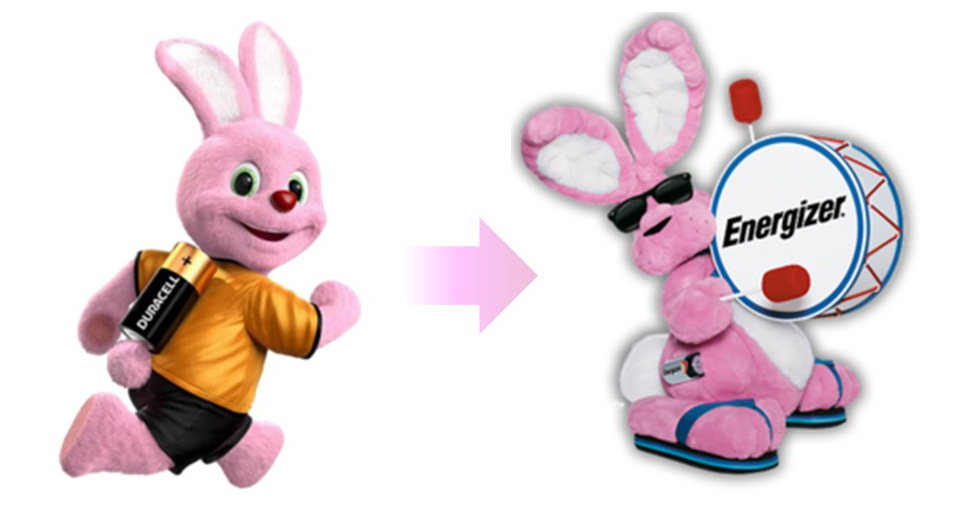4. Intellectual Property Case Study
How Duracell’s Bunny was Outraced by Energizer

One of my favorite trademark stories is a tale from 30 years ago about the Duracell Bunny. “What?” you say – isn’t it the Energizer Bunny? Read on…
In 1973, Duracell began advertisements with a lovable, pink bunny in various activities, powered by its batteries. The theme was Duracell’s greater energy capacity, a claim firmly rooted in science. At that time, the consumer battery market was largely zinc-carbon, and was being disrupted by a new alkaline battery technology being popularized by Duracell. At nearly all power levels, alkaline batteries had higher capacity – as much as twice as long in high power applications. To bring alive a consumer-friendly way to tell this story, an ad campaign was created showing toy pink bunnies playing little drums. One by one, each collapsed as they ran out of juice, leaving only the copper-top Duracell-powered bunny drumming away.
Then – in 1988, something happened. One story was Duracell was slow to renew its trademark for its global mascot; another version suggests that in a legal oversight, Duracell never did file a trademark. During my Duracell days, the non-renewal story was believed correct, with speculation that declining use of the bunny in U.S. ads vs in Europe was the rationale. However it came about, the lapse had a lasting impact.
Energizer noticed the gap, and created an ad spoofing the lovable bunny – with oversized flip-flops, sunglasses and a beating drum that kept going…and going…and going… outlasting bunnies powered by competitor batteries. It first aired in October 1988, and was followed by additional versions showing the new bunny leaving the “Drumming Bunny” ad studio and wandering into sets of several realistic-looking commercials for fictional products, interrupting them. Energizer’s ads were an instant hit.
While the campaign was entertaining advertising, the new Energizer bunny was at first often confused for the Duracell one in stores. Between 1988 and 1991, Energizer’s market share actually shrank in comparison to Duracell’s. A Duracell salesman was quoted in a newspaper saying the ads helped boost Duracell sales. But that benefit was short-lived as the Energizer bunny became more widely recognized. It eventually entered pop culture, appearing in the Macy’s Thanksgiving Day Parade, Windows screen savers and speeches by US Presidential Candidates.
Immediately after its ad debut, Energizer filed a trademark on a pink battery bunny. Duracell quickly tried to follow, but it was too late – Energizer now held the U.S. trademark and blocked the action. The two sides eventually met in a secret “Bunny Summit” and in 1992 reached a largely confidential Bunny Agreement, allowing Energizer to use its version in the U.S. and Canada while Duracell’s bunny kept the rest of the world. There have been several skirmishes and agreement updates since then, but the basic deal has held.
Today, just as a U.S. consumer could not recognize a battery bunny that isn’t Energizer’s, consumers elsewhere associate a pink bunny with Duracell. The divide is a vivid reminder of the value of intellectual property, including trademarks – and the importance of protecting them as the valuable assets they are.
Originally published on June 6, 2019 on LinkedIn
https://www.linkedin.com/pulse/how-duracells-bunny-outraced-energizer-andy-gilicinski/
